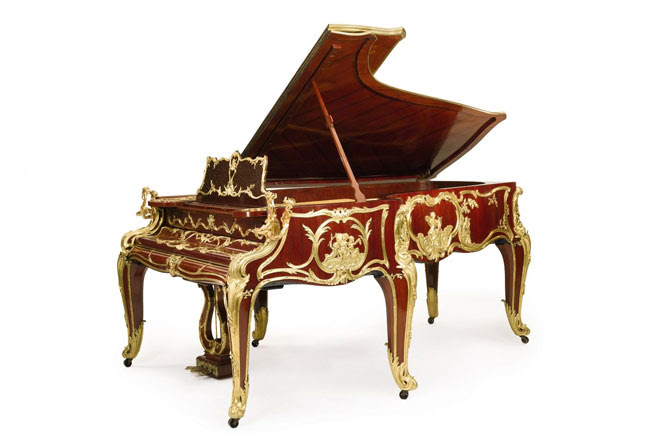Steinway &
.jpg)
This particular piano, serial number 8592, was made circa 1864. It is a Model D Concert Grand. At 8' 11¾" (274 cm) in length, this musical instrument is often used at large concert
.jpg)
_(1).jpg)
The art case cabinet features rare figured Brazilian Rosewood—a wood that is no longer used in the piano industry today due to its endangered status. Steinway eventually ceased the ‘regular’ production of Rosewood grand pianos in 1890 and moved them to special order only. However, since the
.jpg)
The piano is made of a rosewood case containing an inventive cast-iron frame held aloft by three ornate legs. The art case is a hand-carved cabinet with typical Victorian styling. The carved serpentine legs and pedal lyre are heavily detailed. The first art case piano was created in 1857 with a lavishly carved case and legs. The piano with Serial #1225, is believed to be the first-ever Steinway Art Case piano. An incredibly high level of woodworking skill and overall craftsmanship is evident in every Art Case Steinway Piano. Luxurious woods and detailed hand carvings speak of elegance and an uncommonly superior standard of work.
.jpg)
The grand piano is an overstrung design, in which the bass strings pass over the treble strings. On December 20, 1859, Patent #26532 was granted to Henry Steinway Jr. for the
As a world-famous concert pianist, over a hundred years ago, once
Comparable:

Sotheby's New York, 24 October 2012
Art-case grand piano by Steinway and Sons
Sold at hammer price $422,500